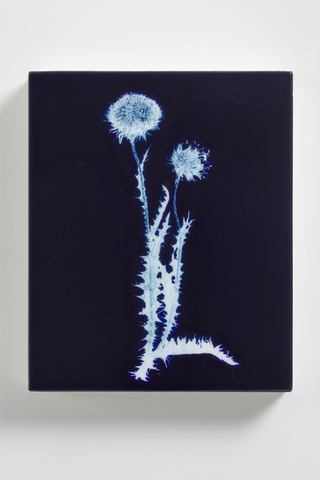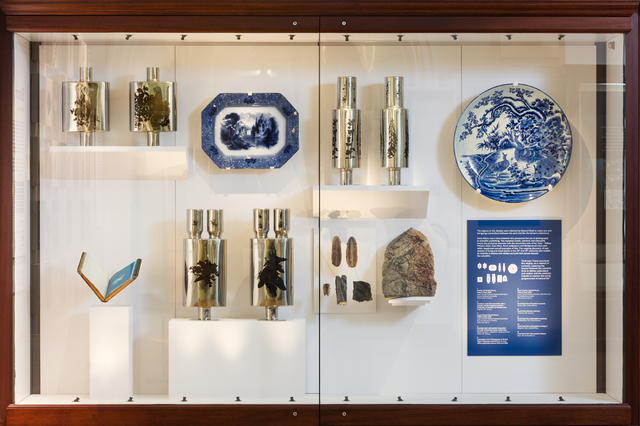Edward Chell's fascination with collecting and classification led him to the Horniman's rare folios of cyanotypes by Anna Atkins, the 19th century botanist and pioneering photographer. In 'Bloom', an installation of forty new painted panels, Chell responds to Atkins' work by portraying both live plants from the Horniman Gardens and pressed specimens from the museum's herbarium.
Chell's exhibit spotlights diverse narratives surrounding natural history and ecology, bringing into question the values and emotions that emerge when we make images of plants.
Atkins was a scientist and while the 'sun prints' she produced are exquisite, her objective was to document and understand natural genera. Through this process Atkins created repeat motifs and patterns that resonate with the decorative arts of her time, such as Willow Pattern china, floral wallpapers and Wedgwood's blue and white Jasperware.
Chell explores the tension between the scientific drive to define, understand and control, and the aesthetic impulse to capture the unruly gorgeousness of natural life.
Silhouettes bring associations of memorialisation and loss. While Atkins' recorded newly discovered species, today such images are premised on conservation and the threat of extinction.
An accompanying display which Chell, drawing on the museum's collections, conceived as a Cabinet of Curiosities, echoes these themes. Carboniferous fossils, 18th century ceramic plates imported from China and one of Atkins' rare folio volumes are displayed alongside Chell's ornamental pairs of car silencers, etched with roadside plants.
An accompanying colour illustrated publication 'Bloom' further unpacks these themes and ideas, with essays by Anna Ricciardi, Edward Chell and Hugh Warwick. Published by The Horniman museum and Gardens this was launched on Saturday November 14th 2015 in the Pavilion.







